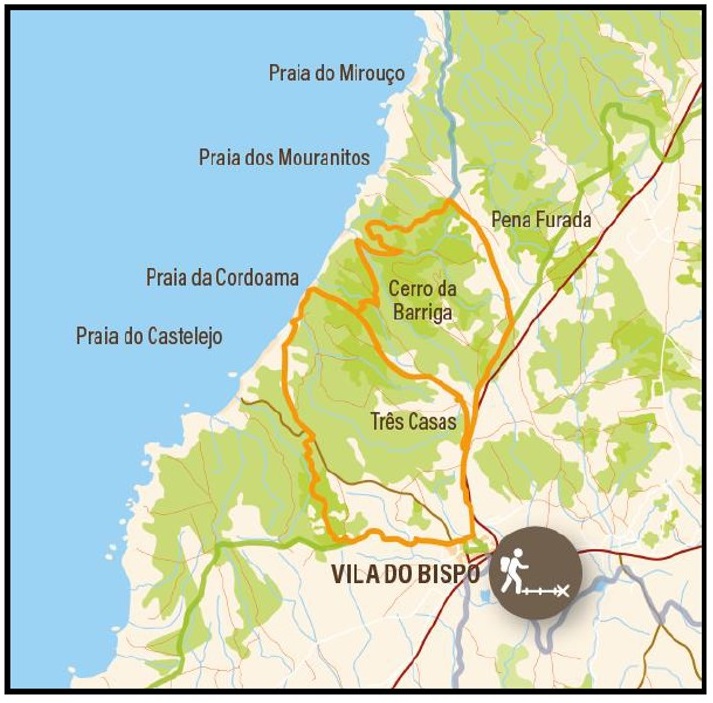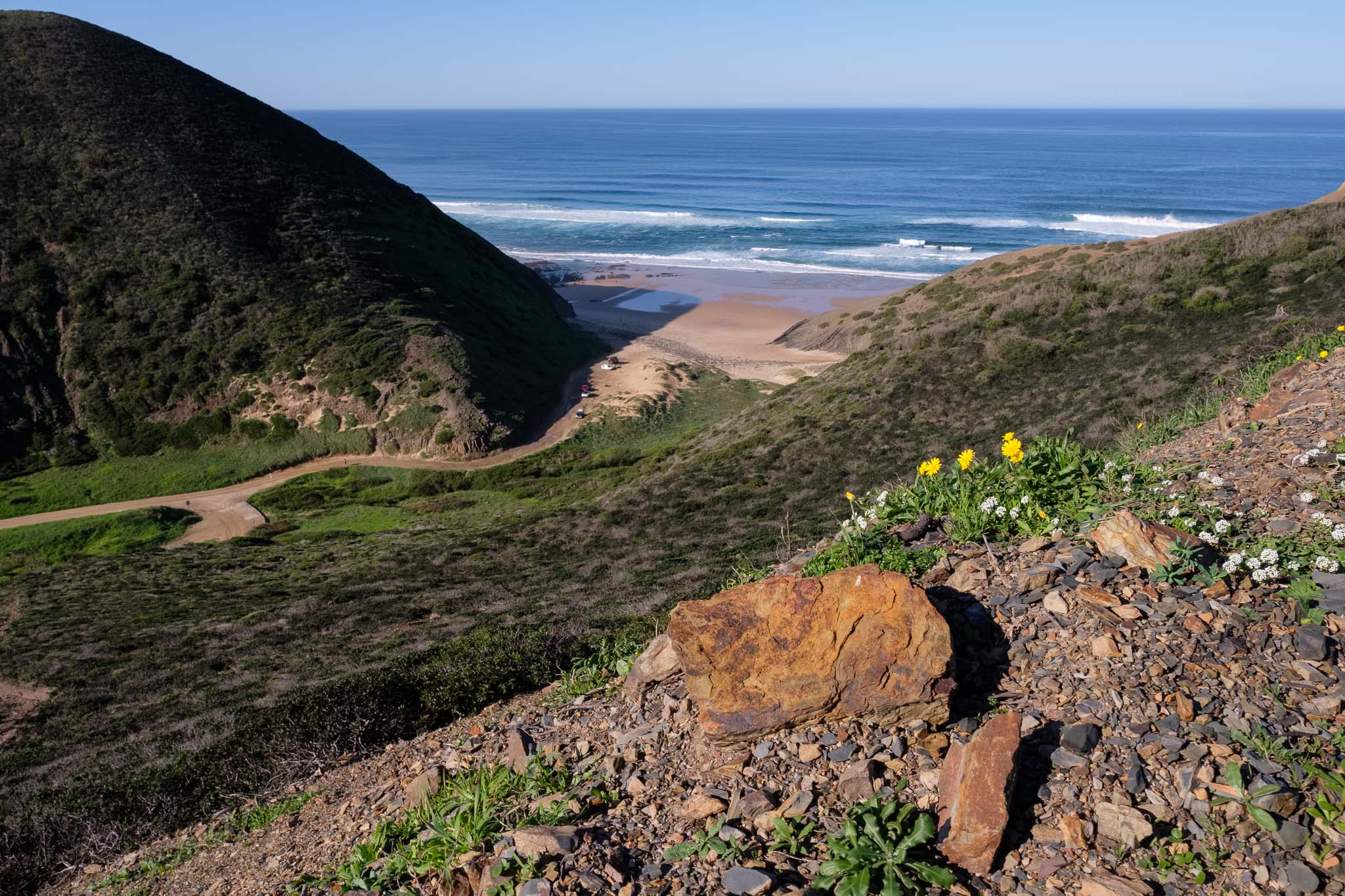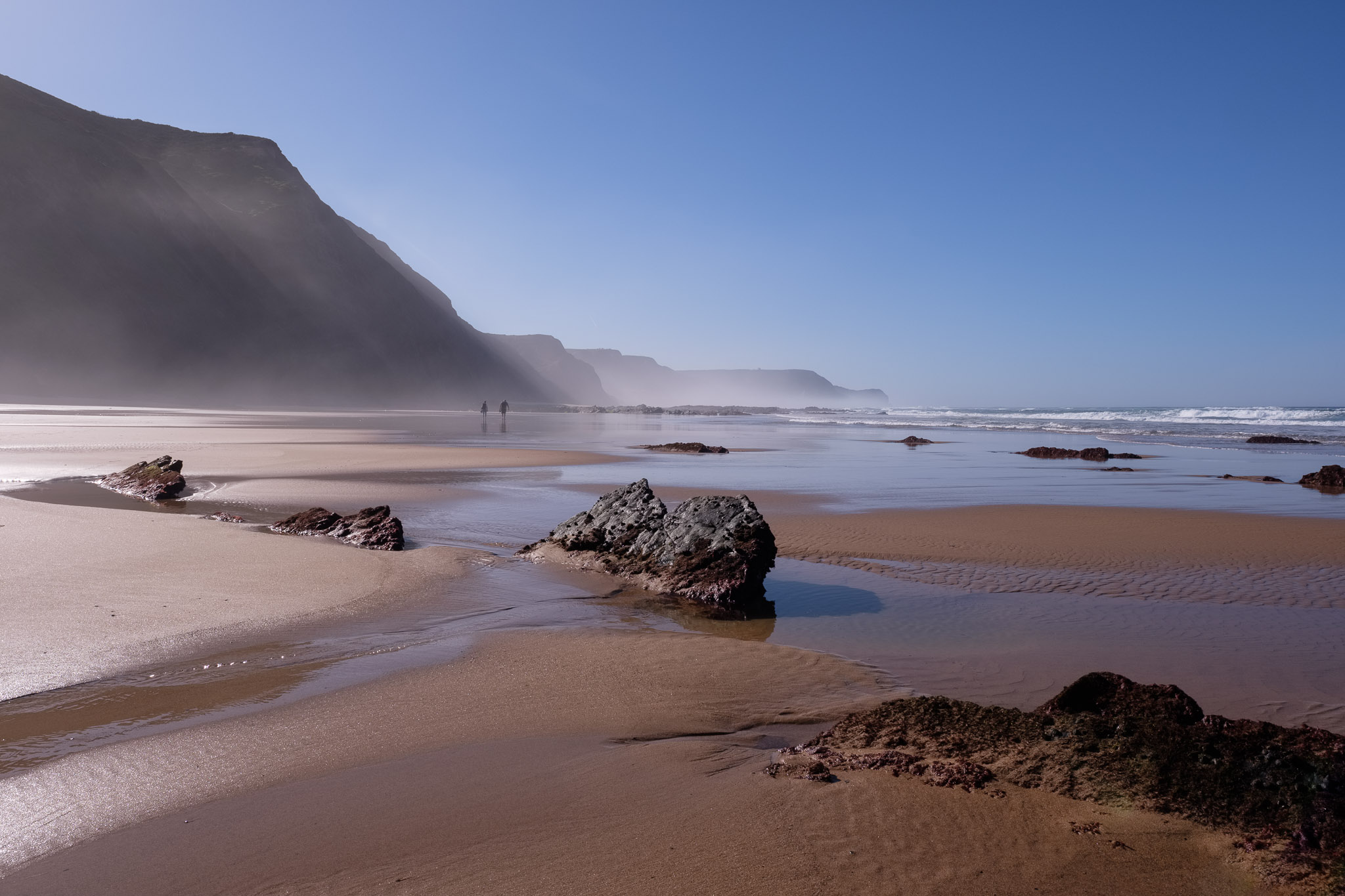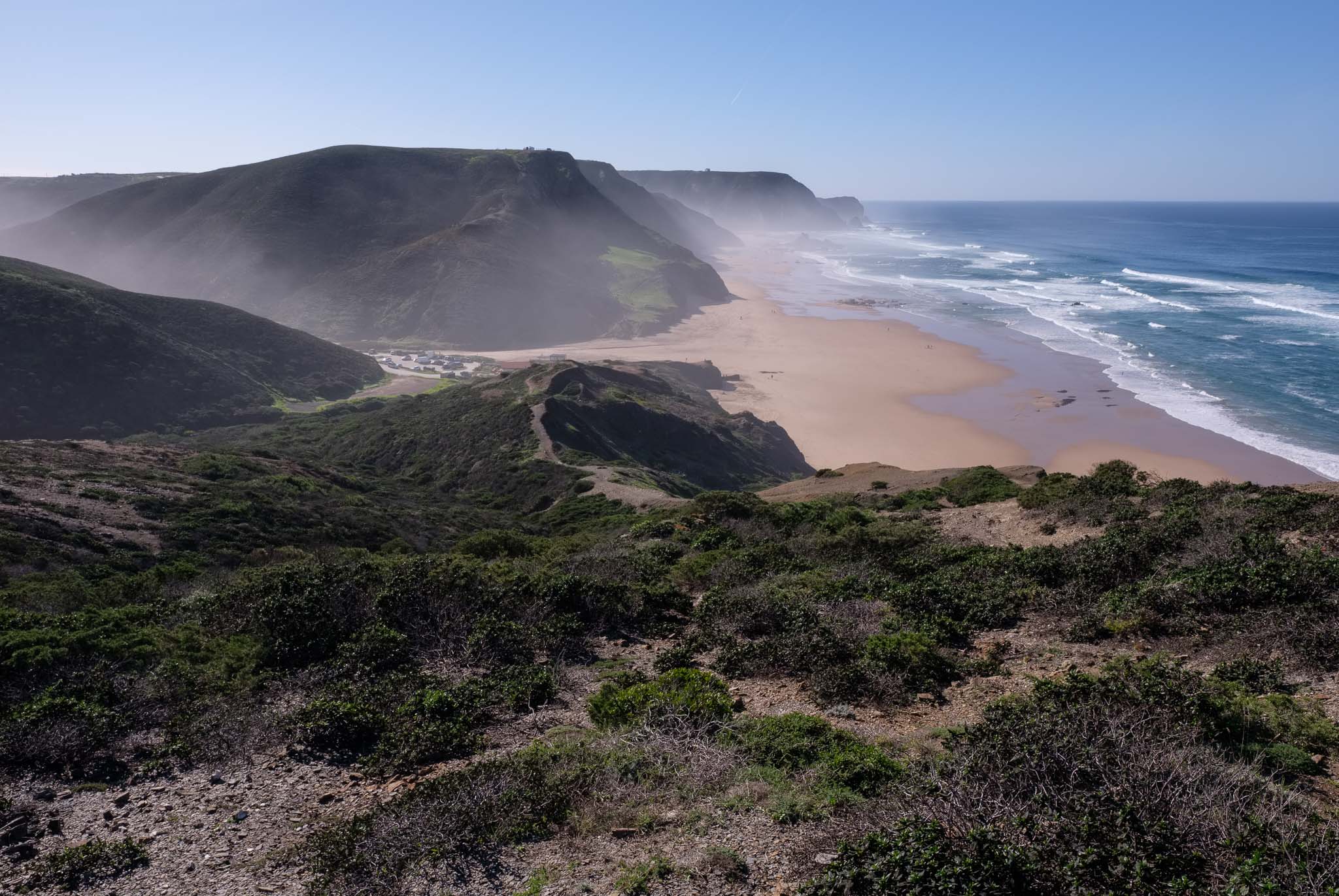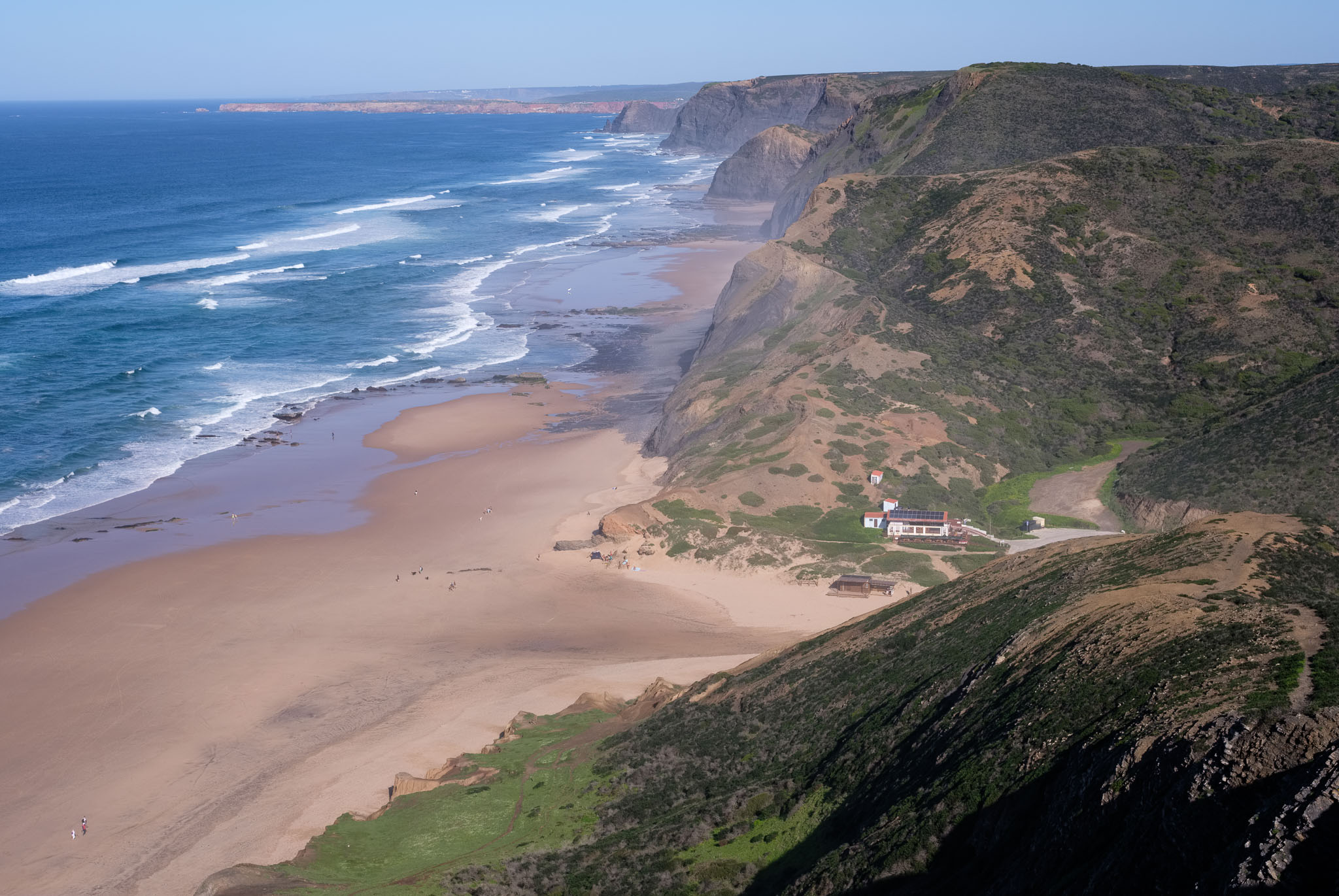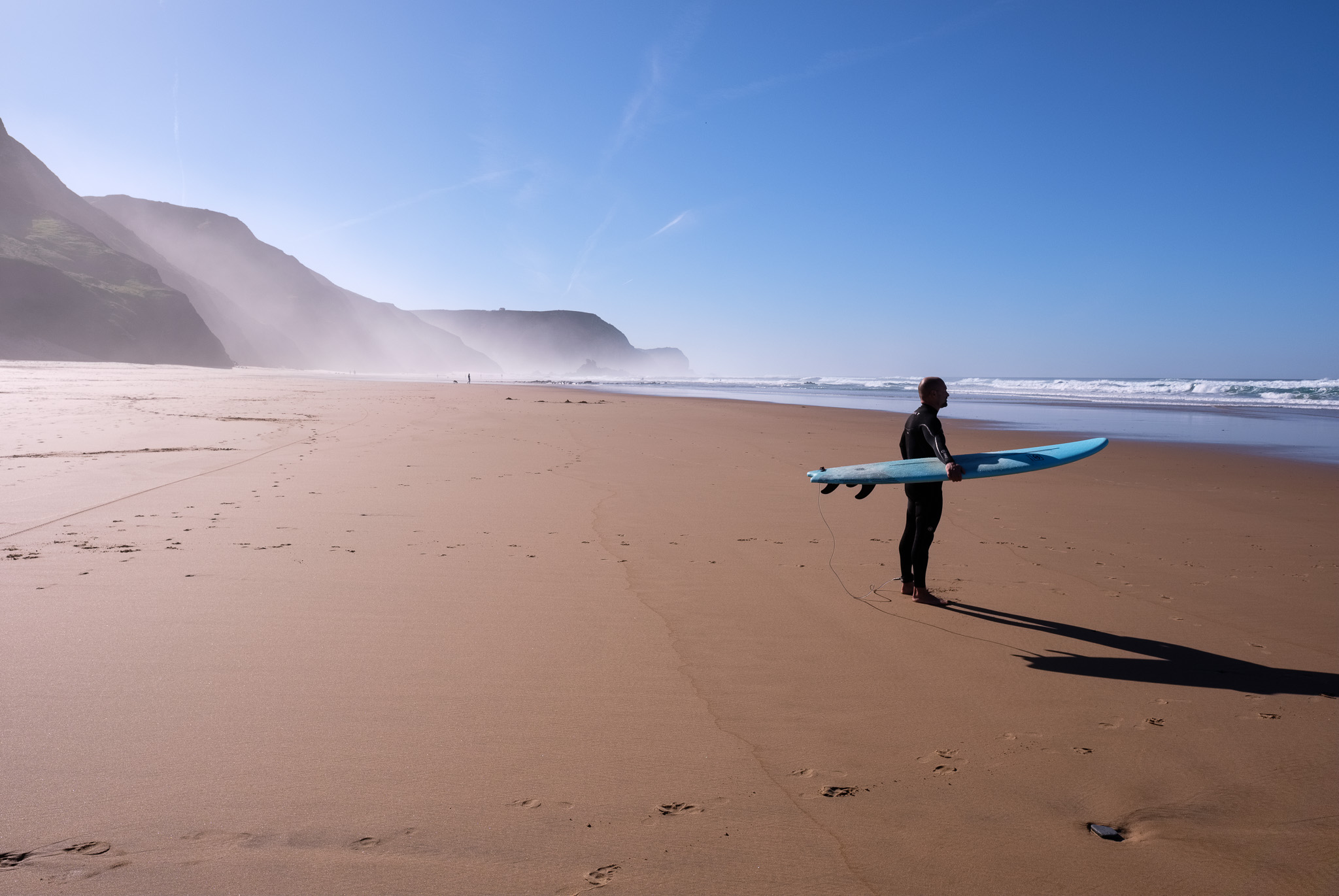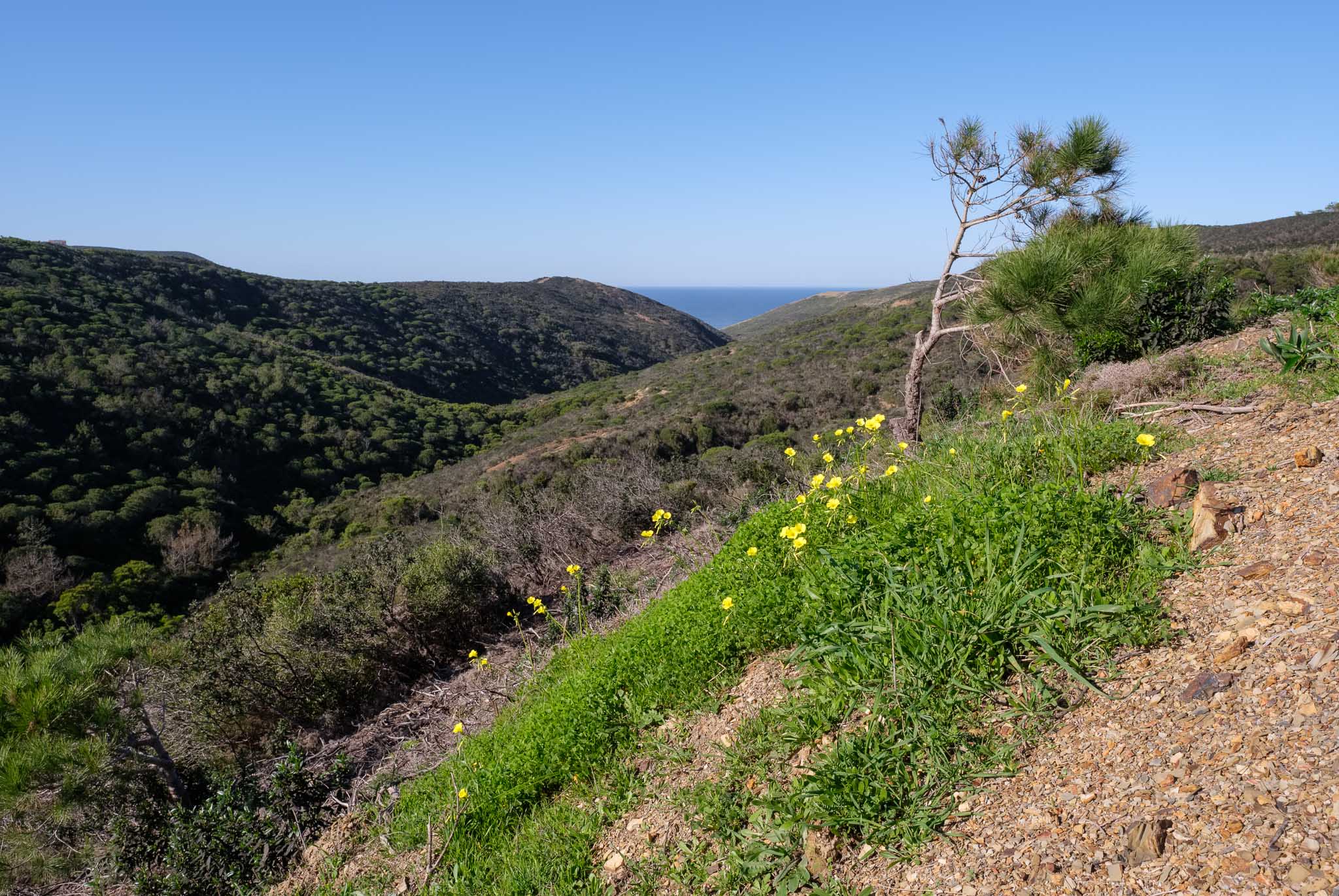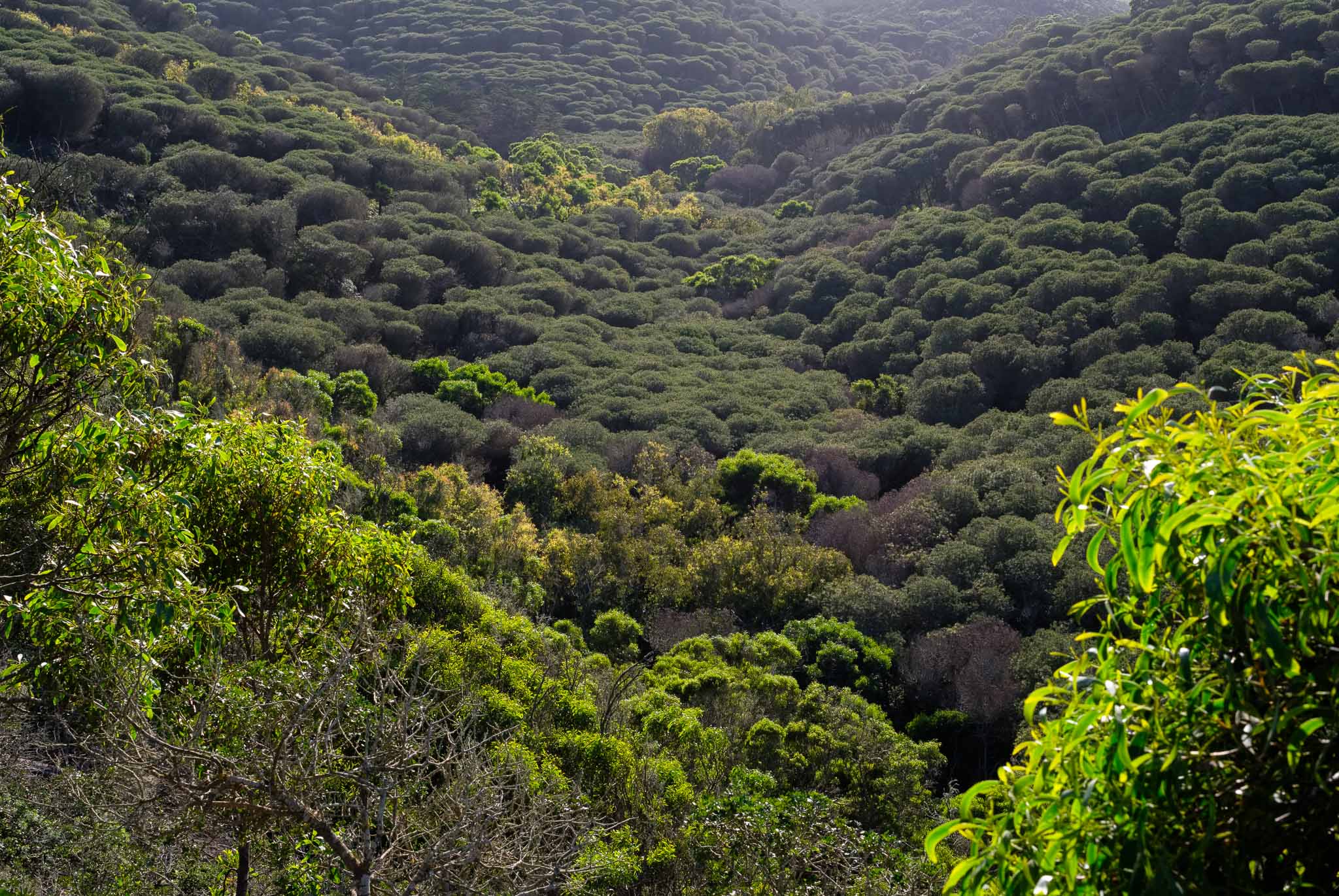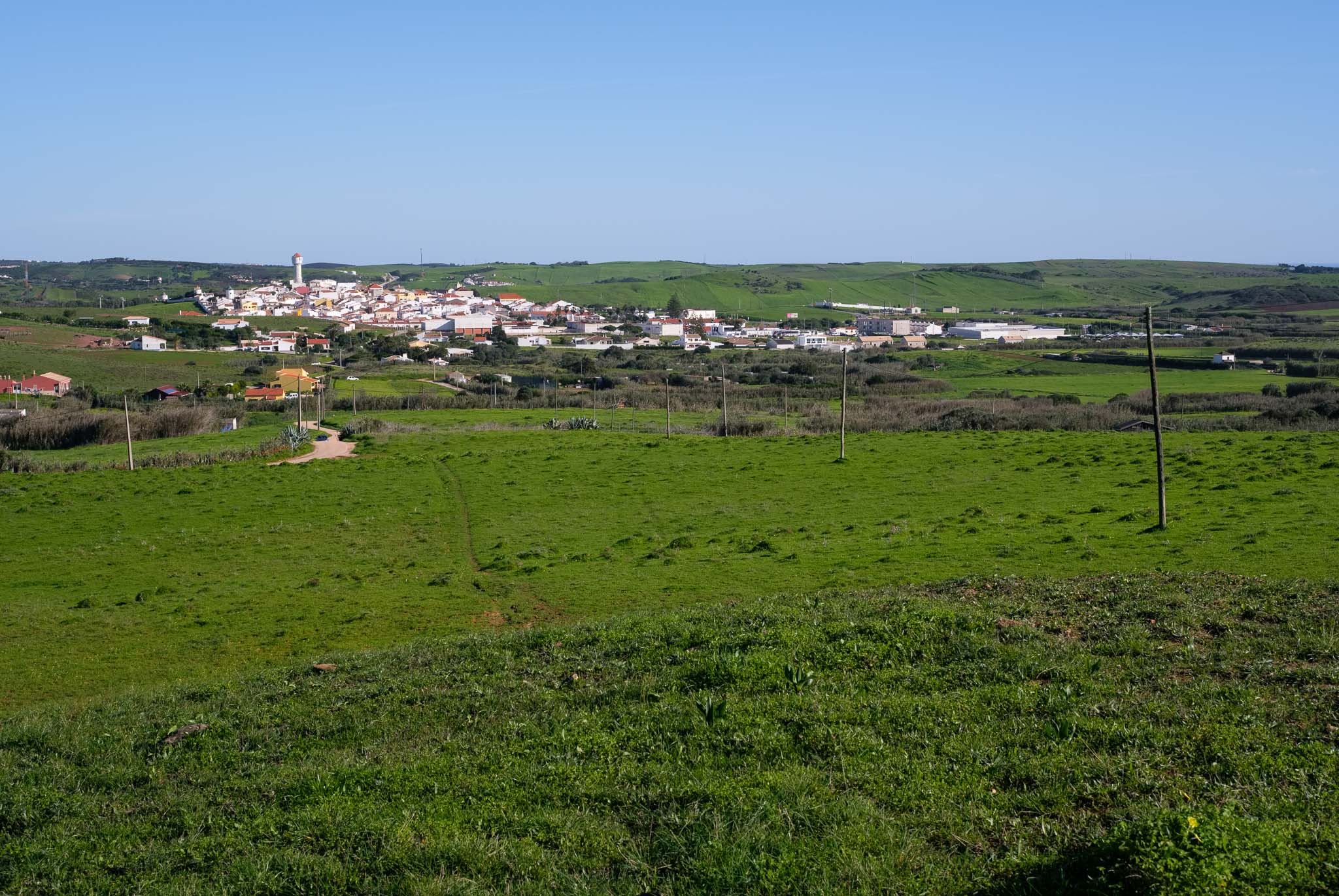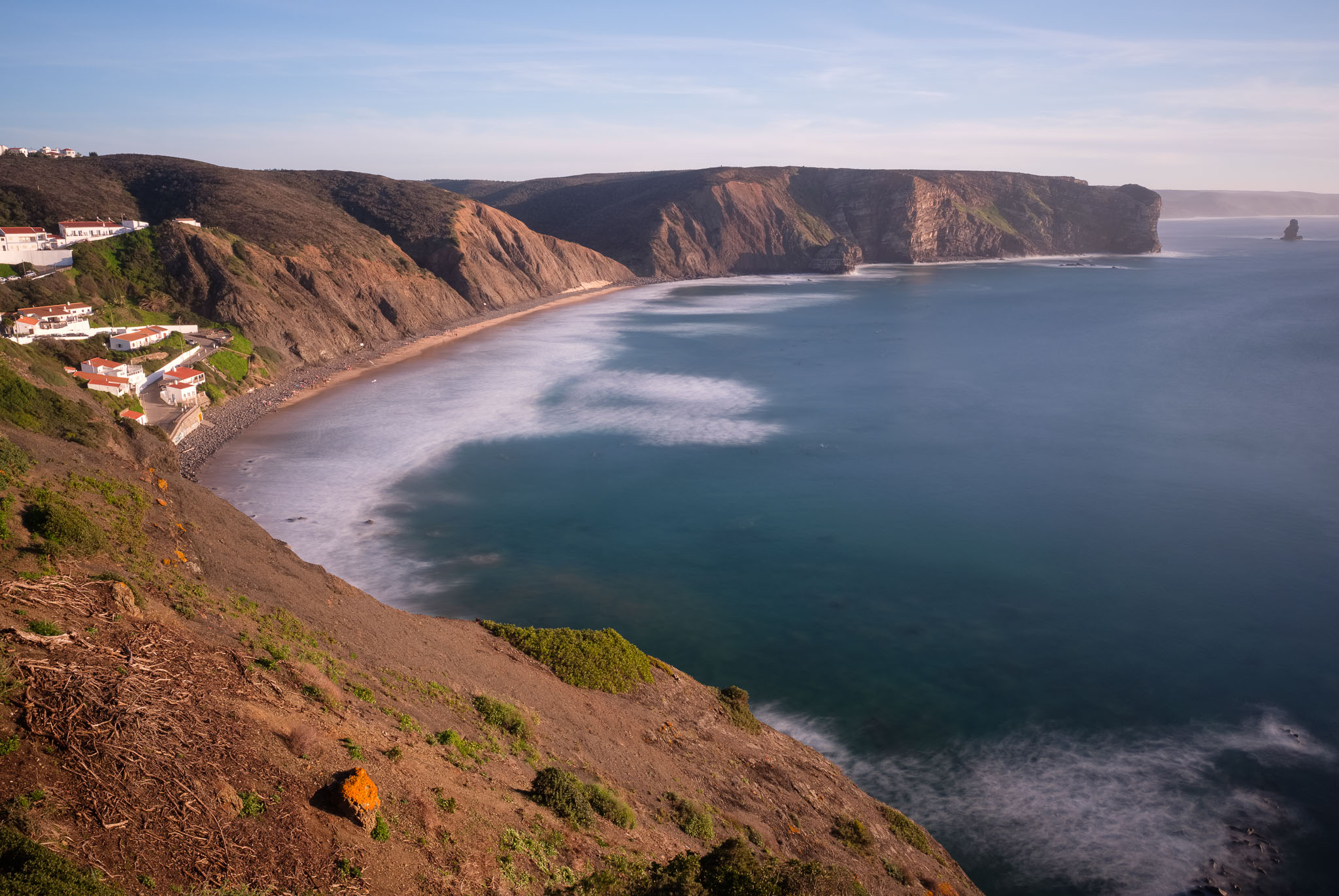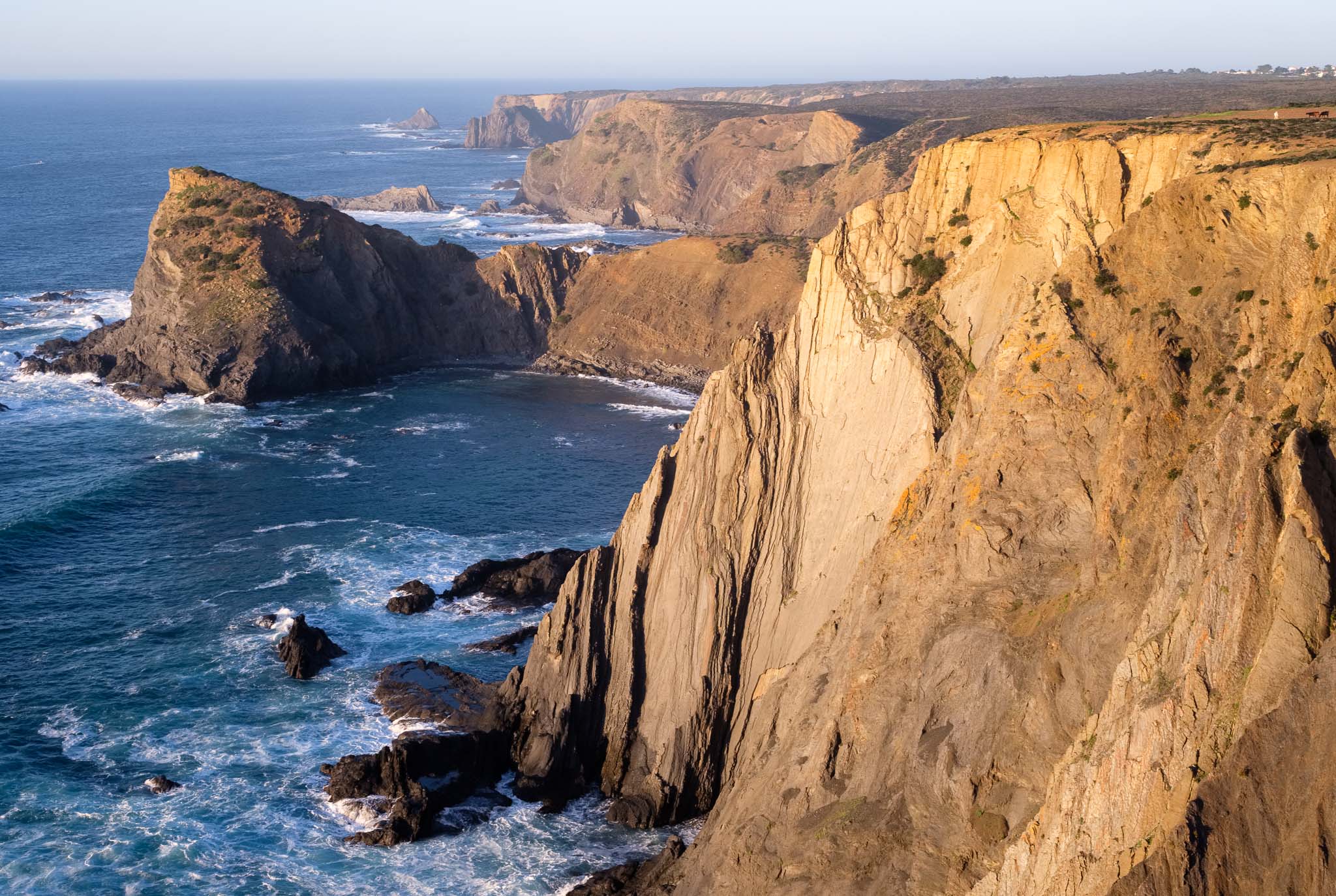This is one of the many routes of the Rota Vicentina network in southwest Portugal, and passes through the villages of Santa Clara-a-Velha, Sabóia and Totenique. The area is characterized by a rural landscape, where small farms can be found dispersed in the hills. Details can be found in the following link:
https://rotavicentina.com/en/trilhos/discovering-totenique/
A general map is shown below as a quick reference for this 13.5 km walk.

The trail starts in Santa Clara-a-Velha, a small village near the river Mira, following the river valley along the first half of it. You can park your car near the tourism office and perhaps get some supplies from the local café. From here, the path crosses the river in a pleasant wooded area. There has been a drought in the last couple of years, so this part of the river is normally dry, but due to recent rainfalls, the water is running again.
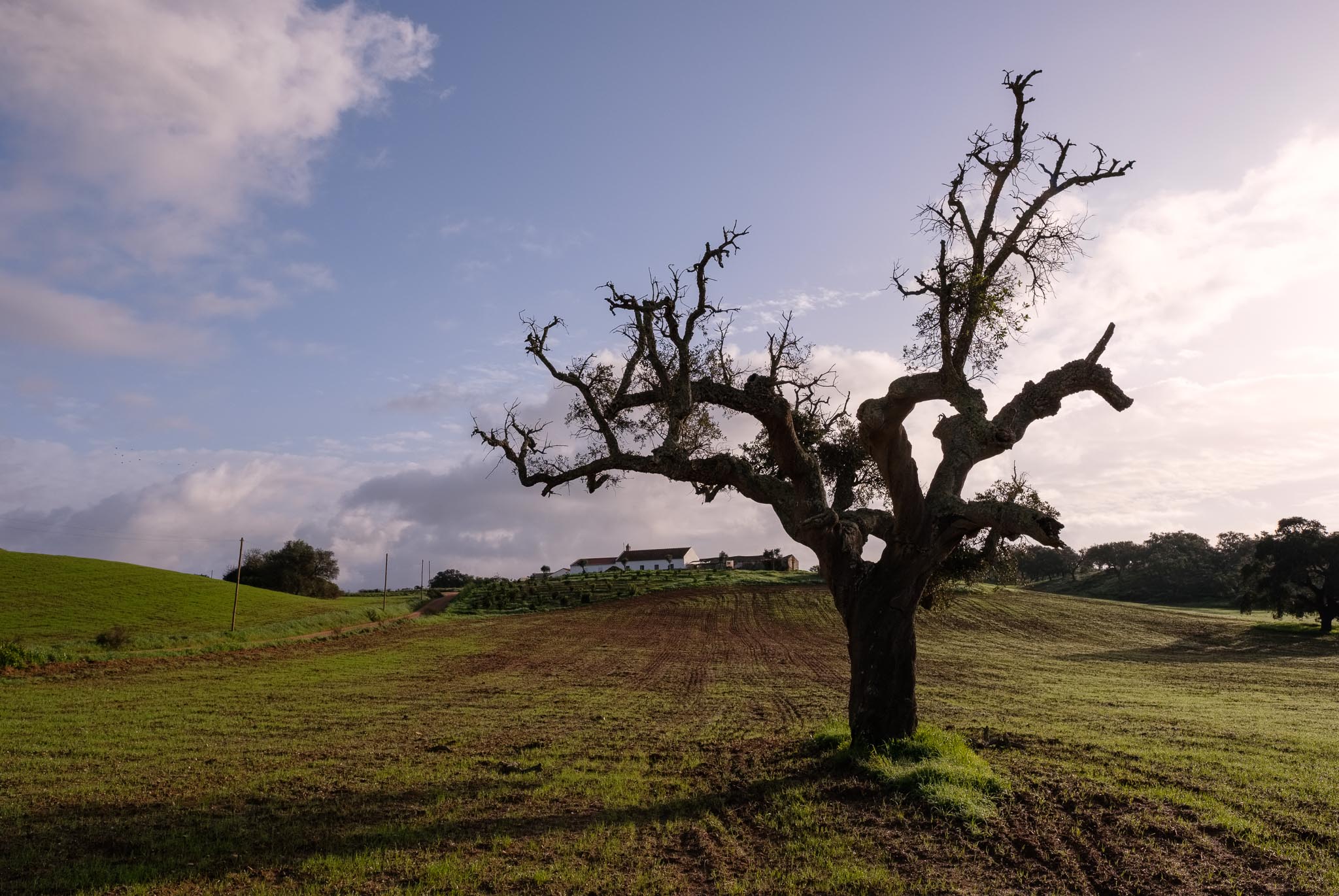

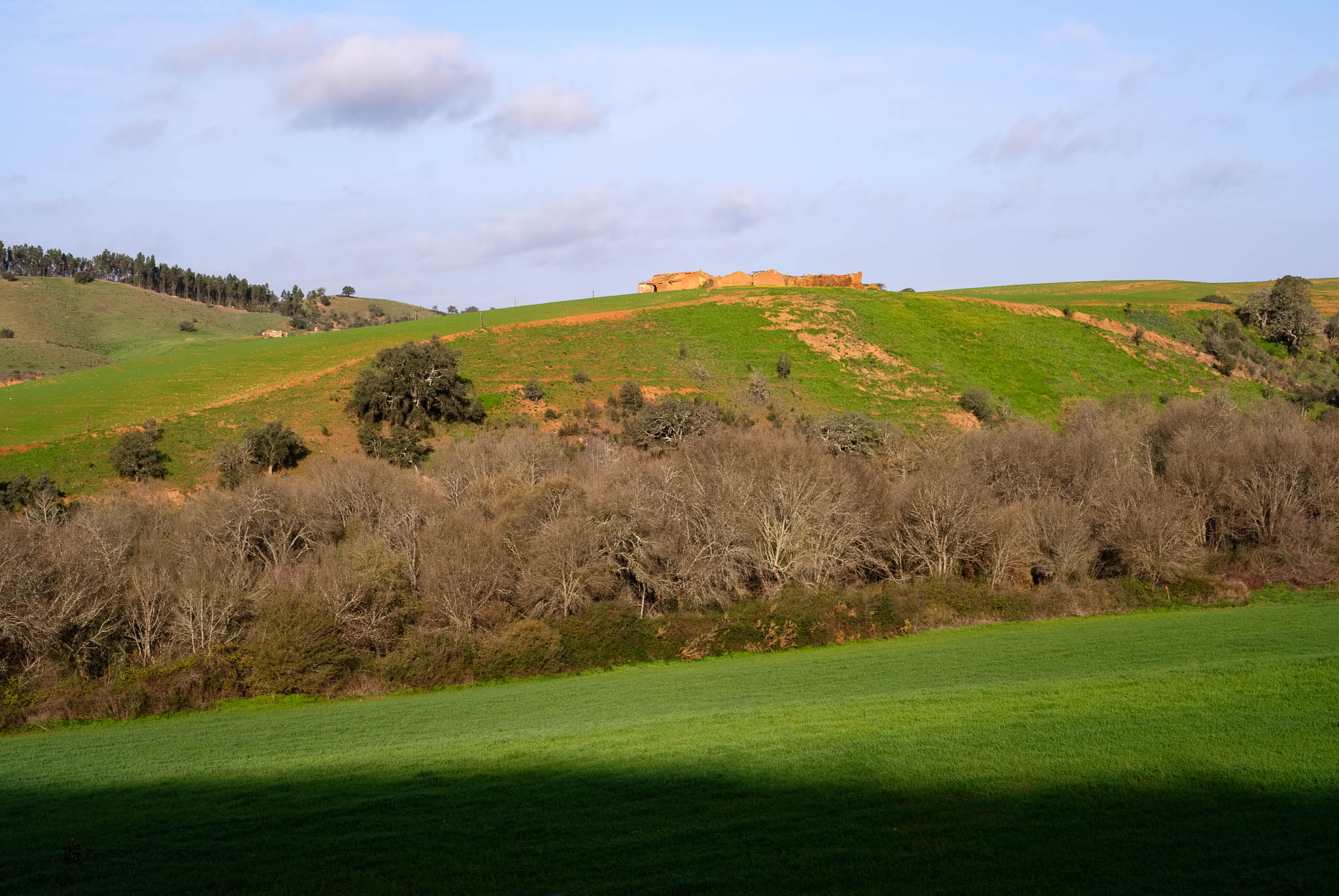
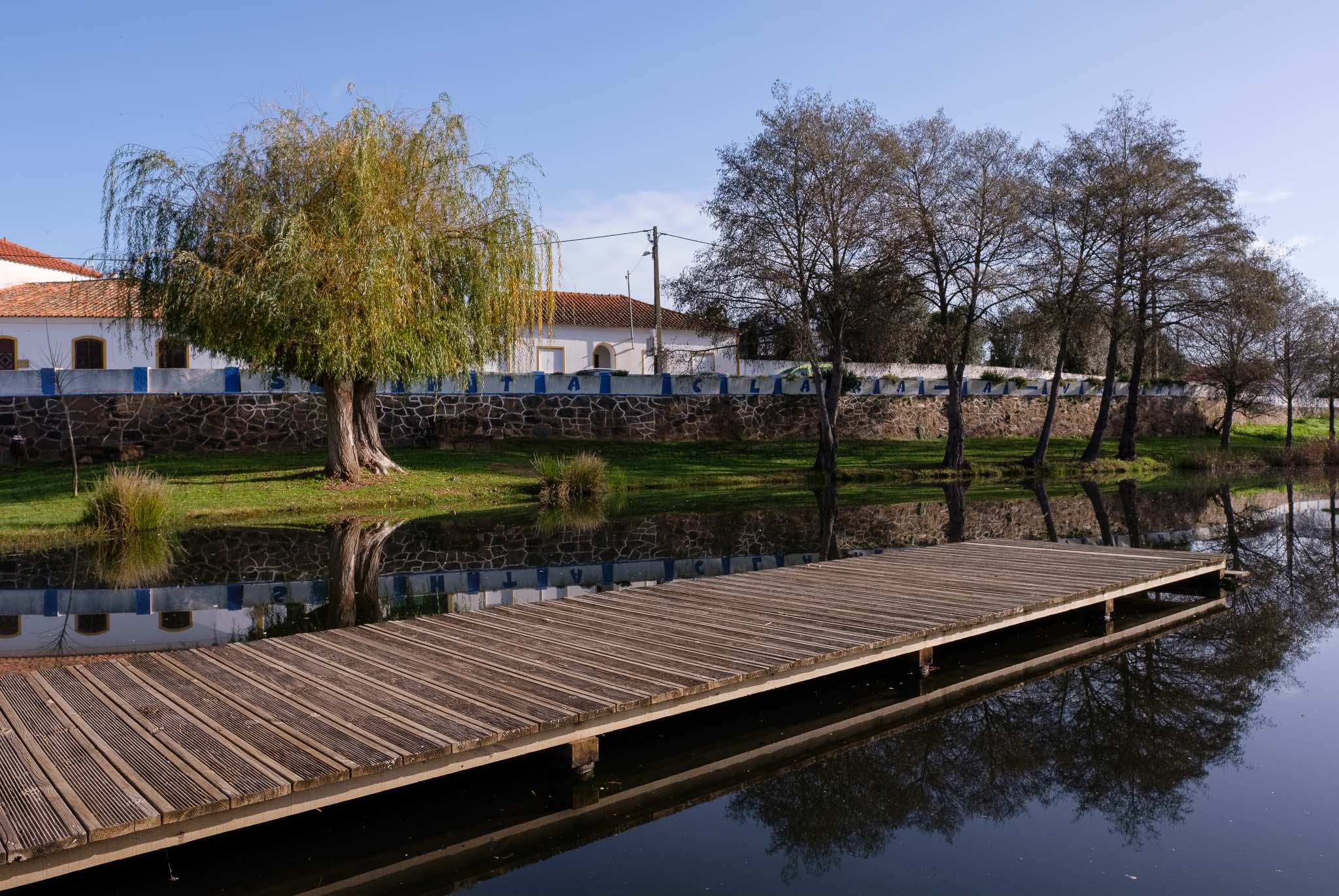
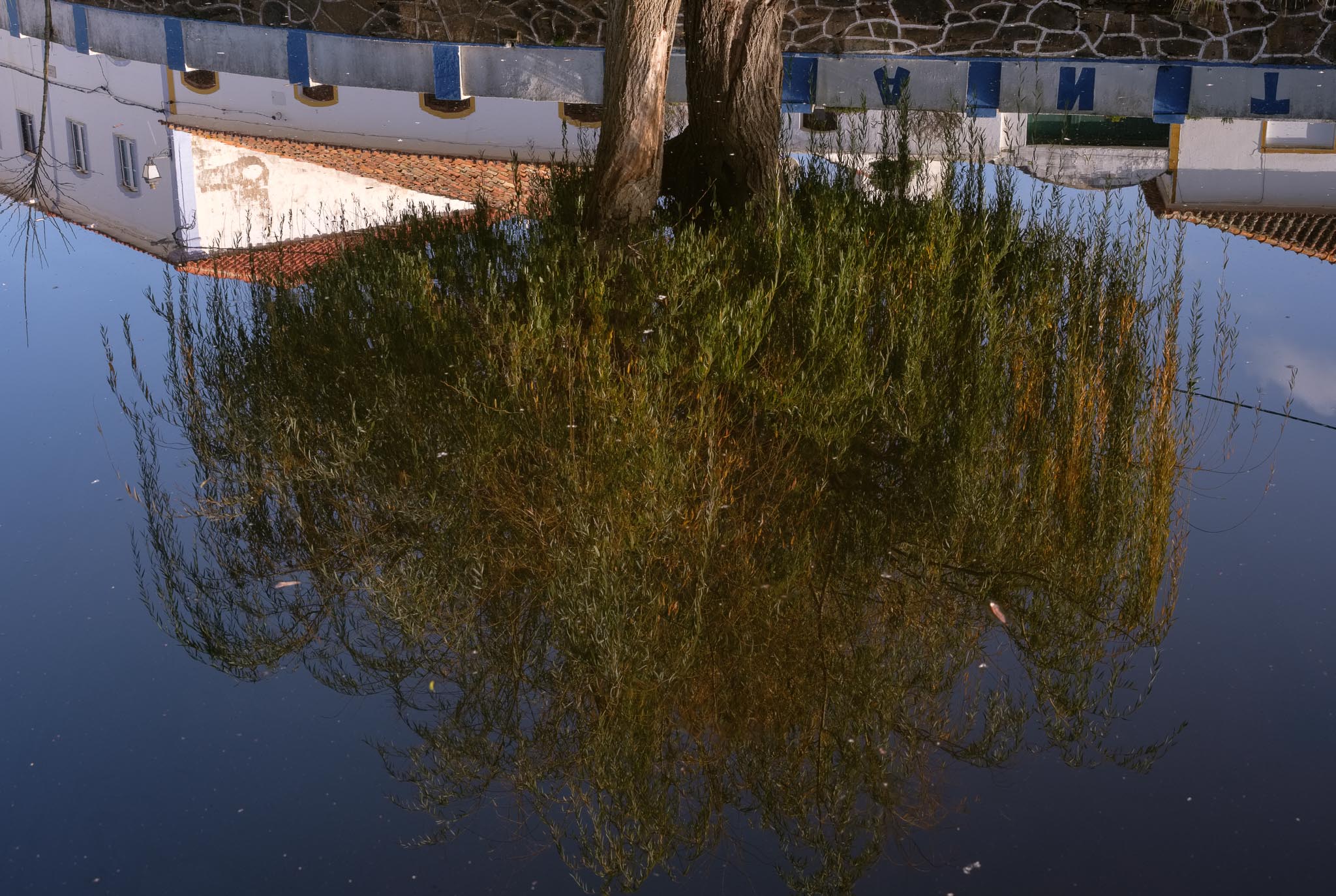
The first few kilometres of the trail are easy to walk, crossing hilly terrain before arriving at the Santa Clara and Sabóia train station. From the top of a hill, the scenery is nice, with a succession of green valleys and mountains.


After so many months of drought, the rainfalls in December have changed the landscape completely. The ground is covered with green grass, and there are many patches of flowers. Looks like spring has arrived during the winter, a feeling that is reinforced by the balmy temperatures. Leaving the train station behind, the trail then crosses several farms located in a valley, and I stop here and there to make some photos.
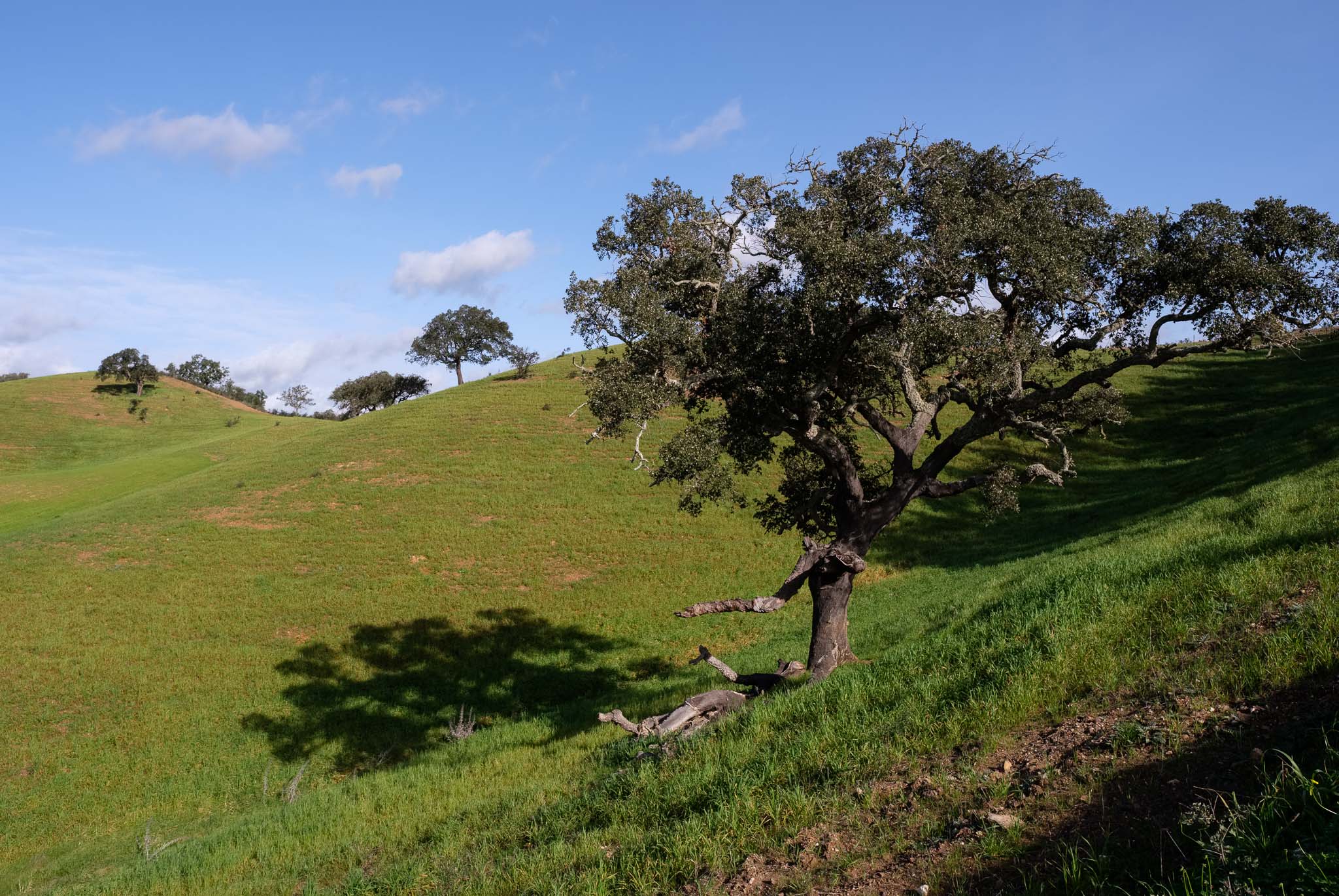
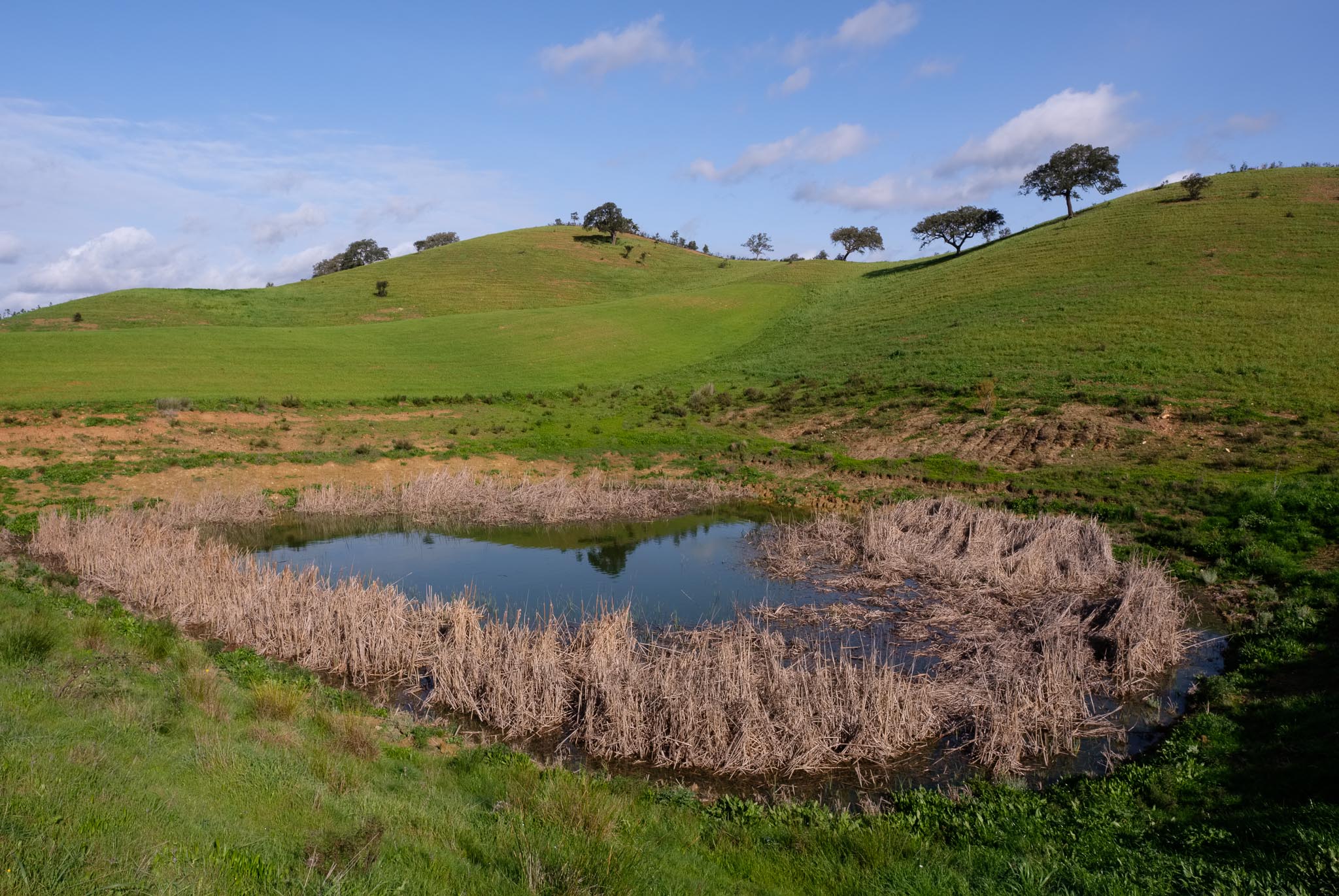
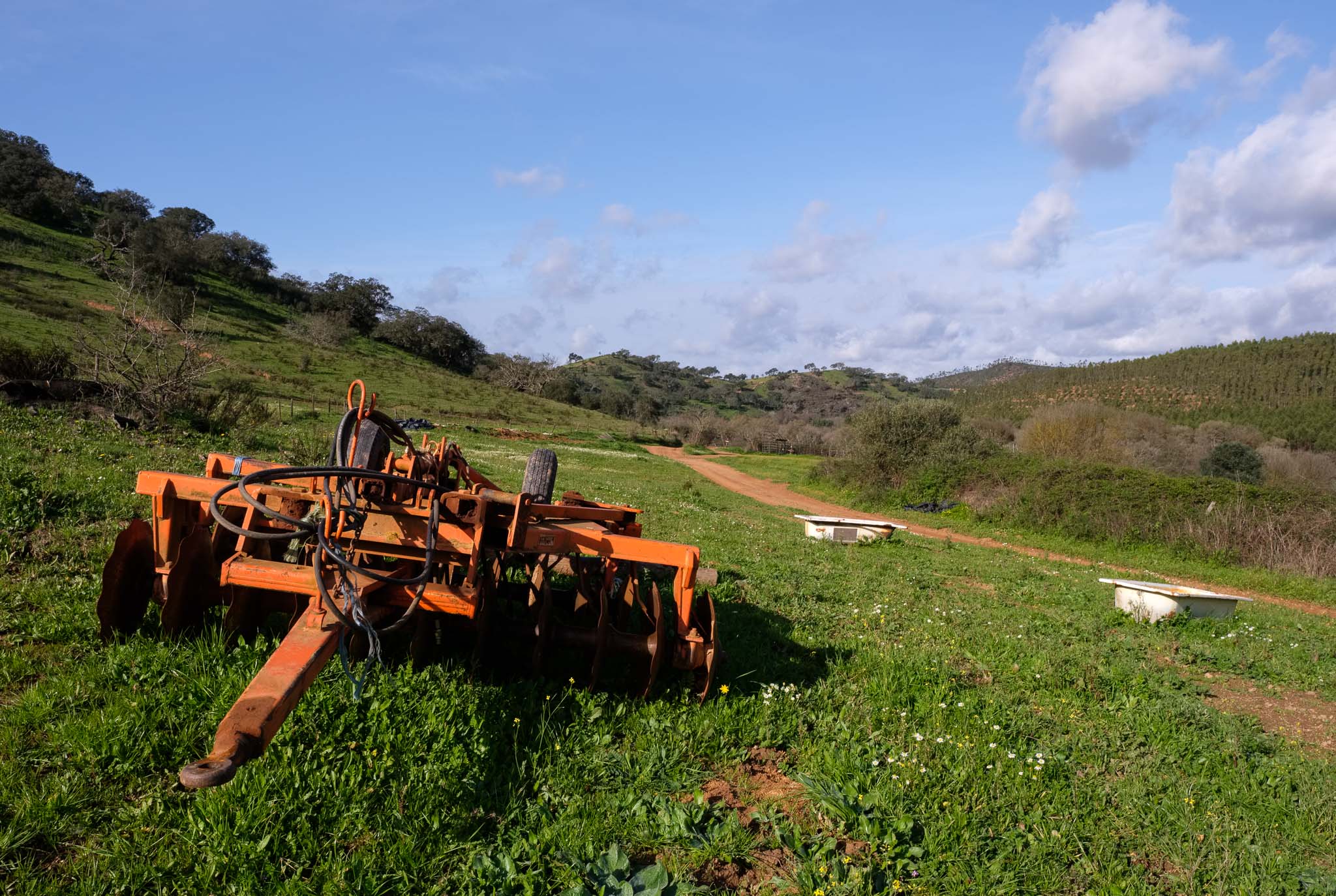
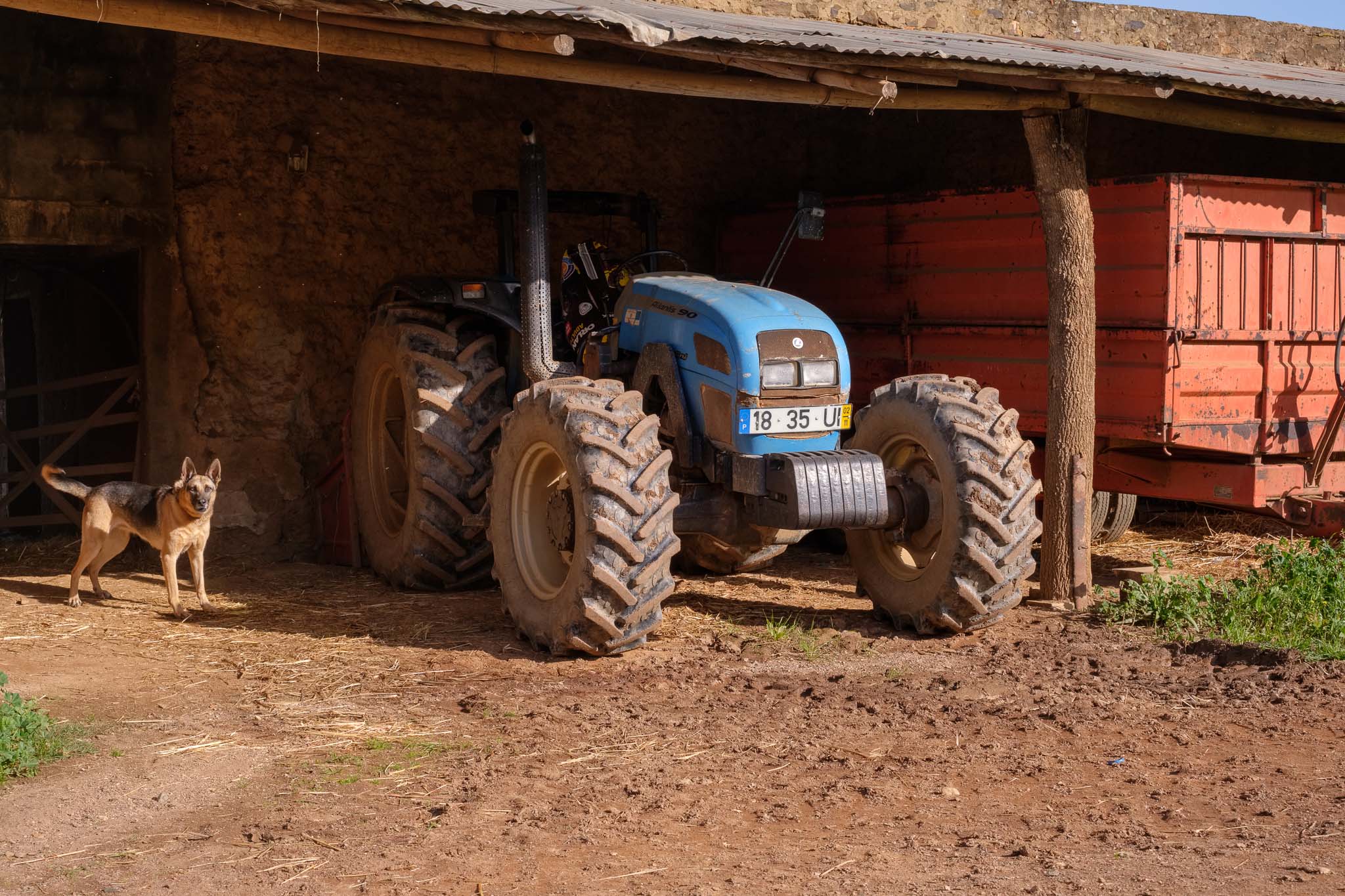
Even though it is mid morning, the winter sun is low in the sky, and as I climb the shaded side of a hill, I notice many spider webs in the ground. These are covered with water droplets from the night’s moisture and morning dew. Mushrooms are also conspicuous, and come in different varieties.
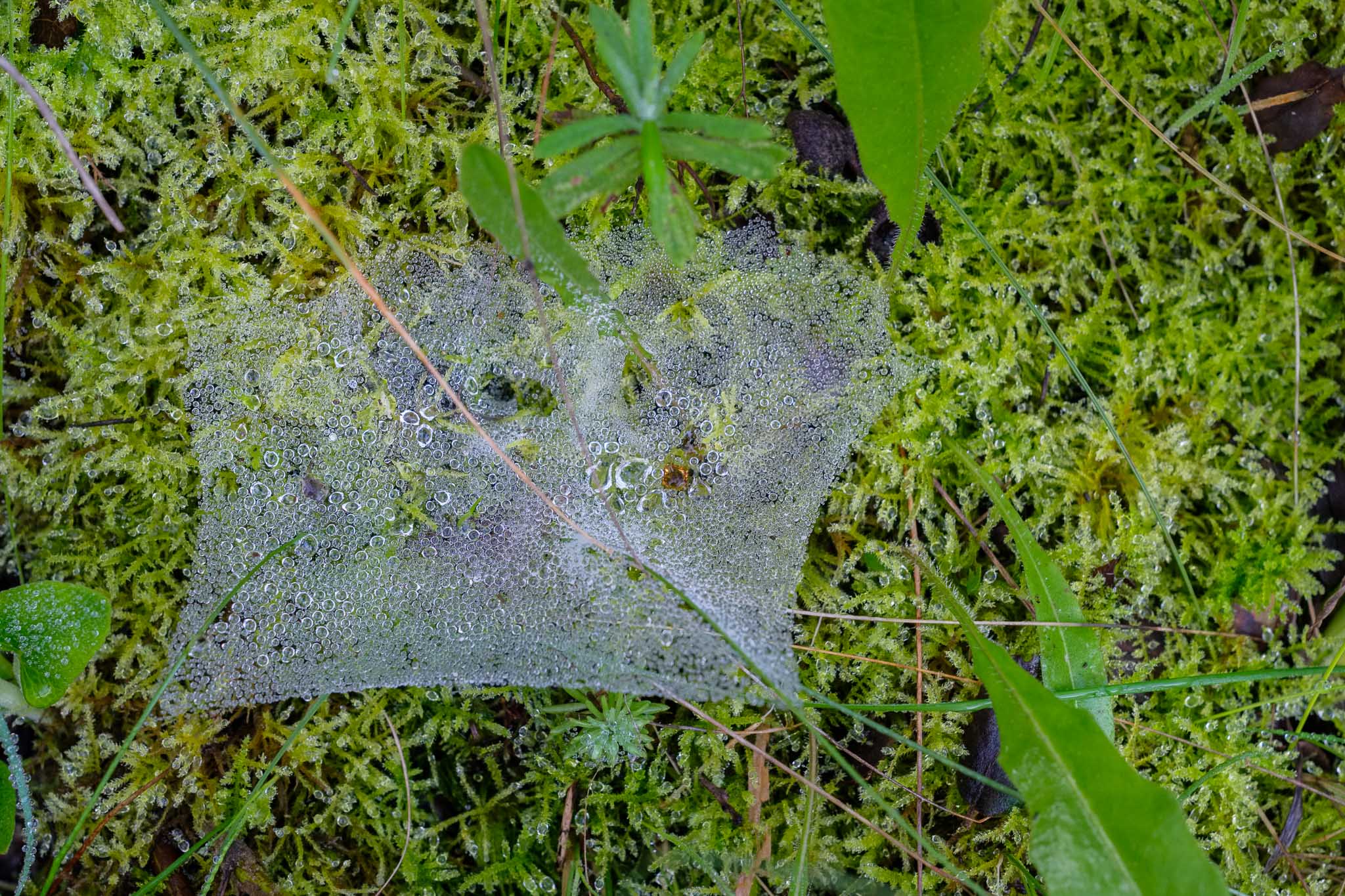
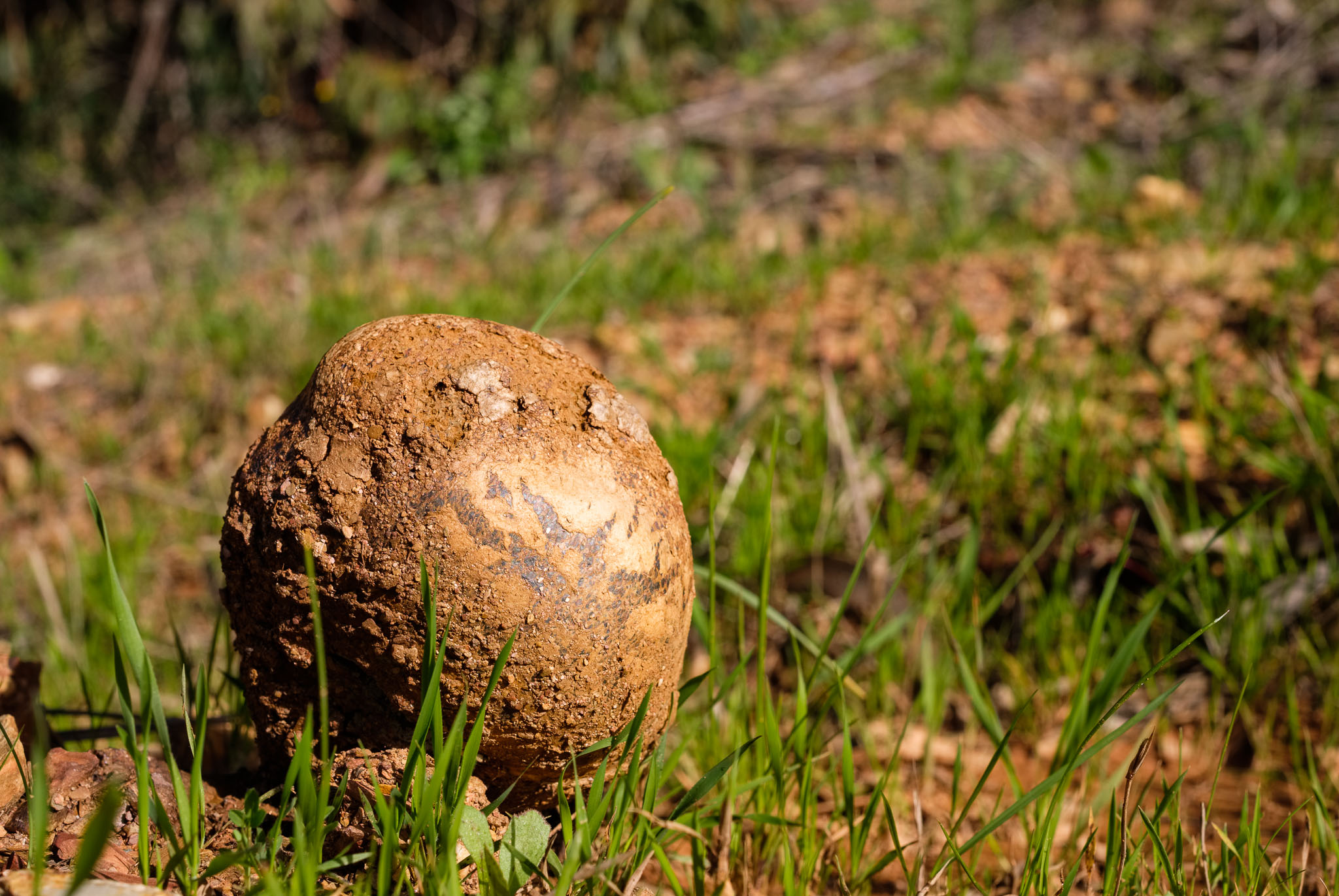
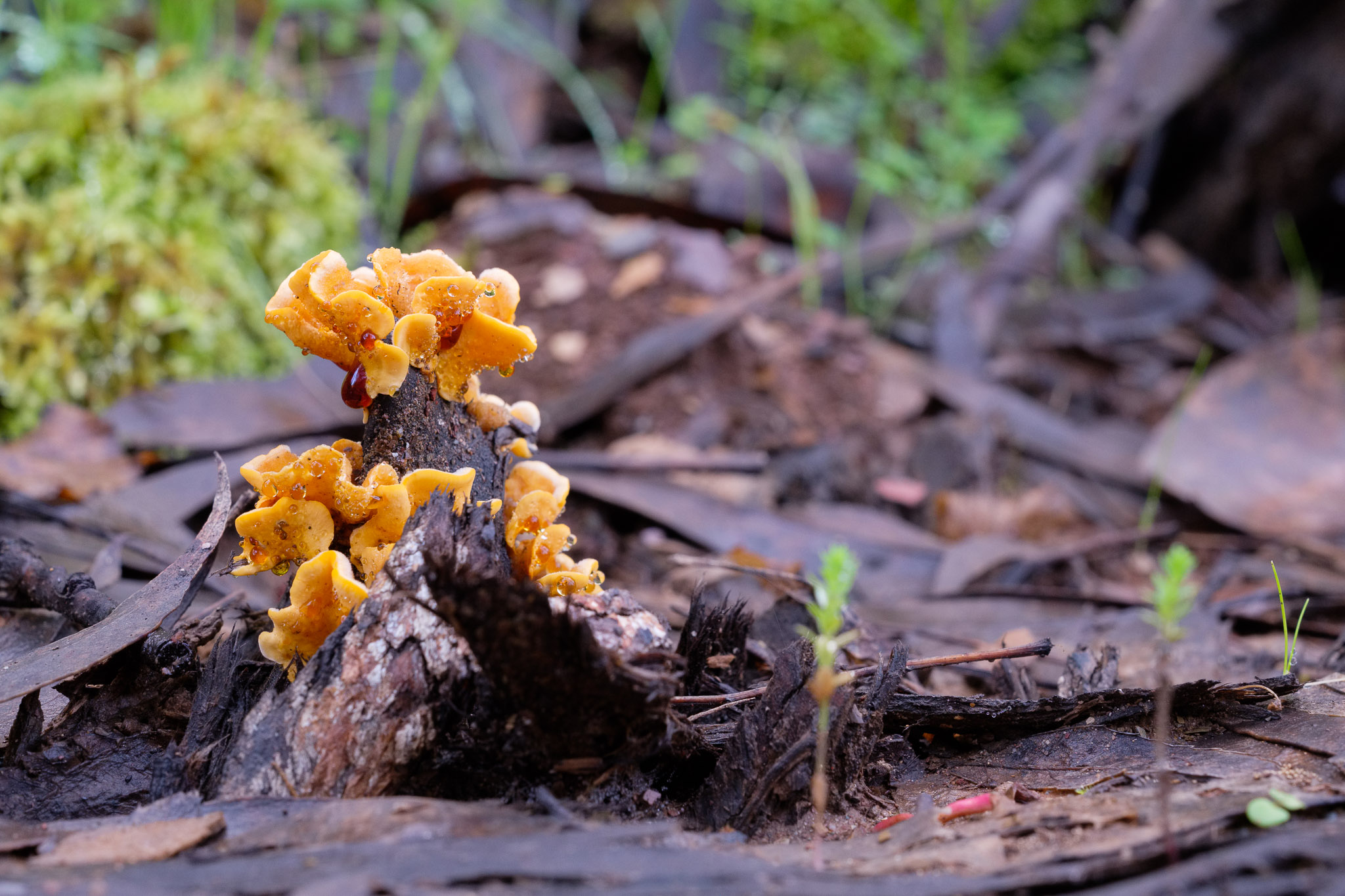
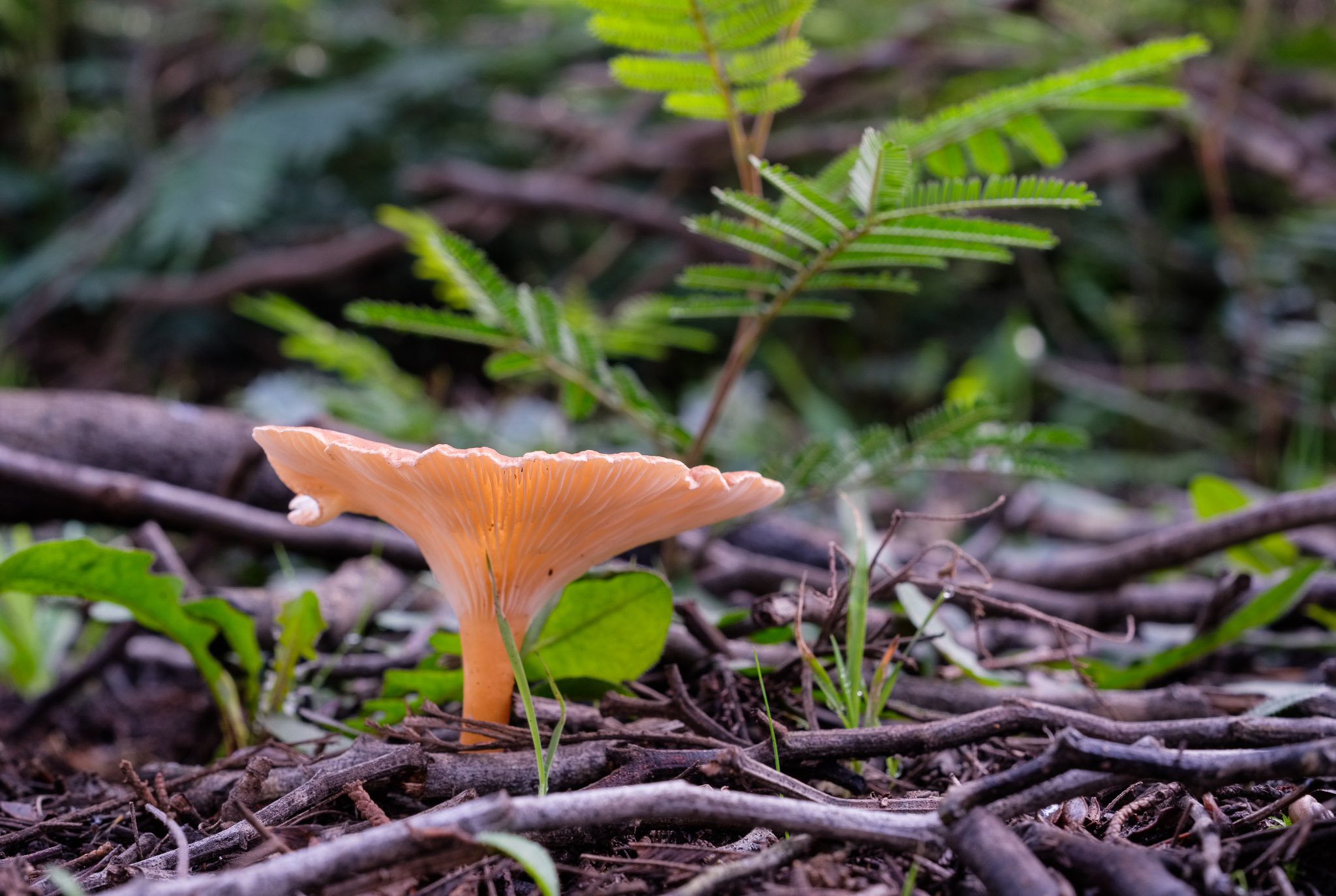
It is almost time for a picnic lunch, so I take a well deserved rest near the small group of houses that are known as Totenique. Most of them are abandoned, but the fields are still cultivated and there is some cattle grazing nearby. The name comes from the nearby creek, one of the river Mira subsidiaries. As I cross a small bridge, I notice the pattern of the sunlight’s reflection on the surface of the water, almost like dancing ripples.


The last part of the trail traverses the Totenique valley, before a steep climb reaches the top of the mountain. From here there is a nice view over the valley to the west, and it is an appropriate time to take a breather.
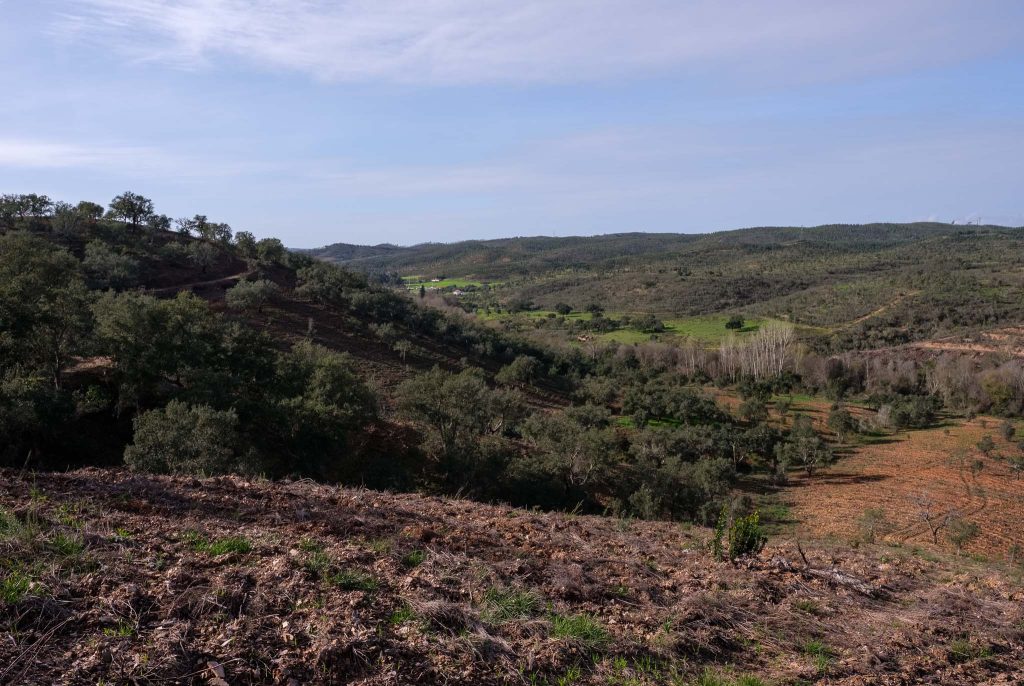
It is also worth admiring the view towards Santa Clara-a-Velha in the east, before descending into the village, where this circular trail ends.

When I visit this place, I like to go to the Santa Clara-a-Velha dam, where the water from the river Mira is captured, forming one of the largest lakes in Portugal. With the approach of sunset, the temperature dropped a bit, and a stiff wind started to blow, creating ripples on the surface of the water. I was glad to see that, compared to summertime, the level of the water seems to have risen about 5 or 6 metres, which is great news.
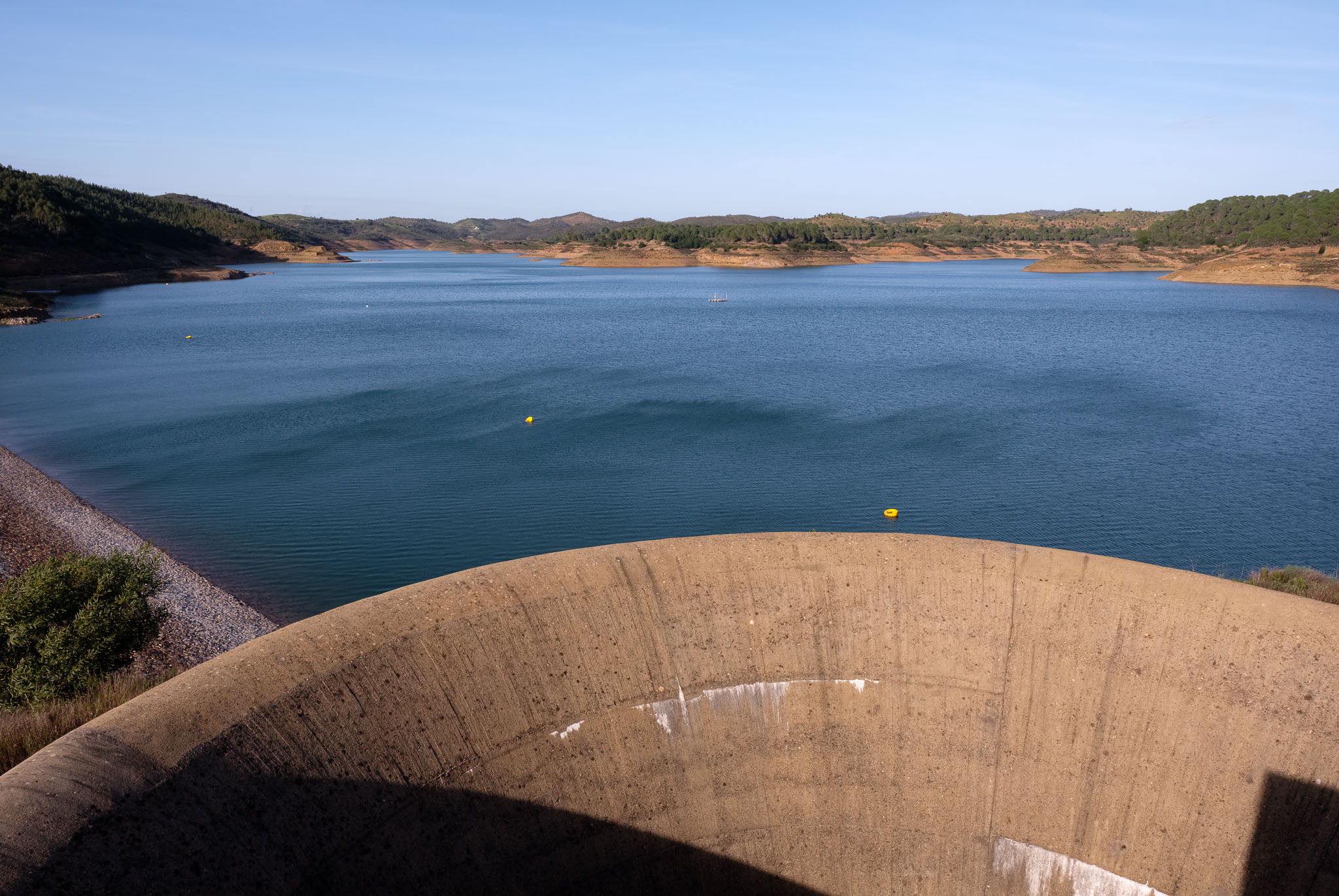
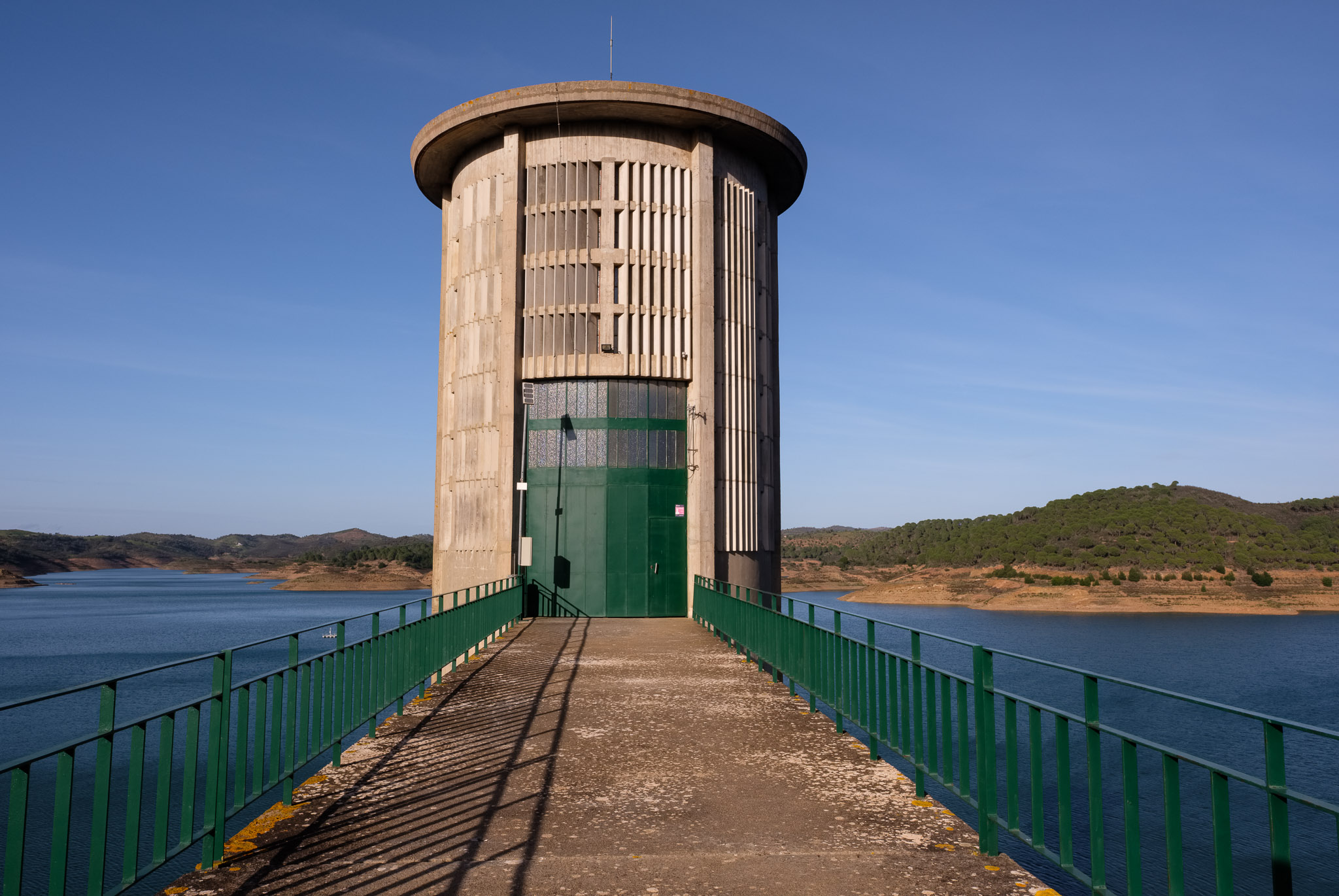
Another local attraction worth visiting is the Dona Ana bridge, a medieval structure close to Santa Clara-a-Velha. This is an old stone bridge over the river Mira, but unfortunately only half of the span remains. Depending on the season and amount of water in the river, it may be more or less difficult to walk down to the bank. This time I was lucky, as the river had plenty of water.

As always, in terms of my photography, I like to keep things simple. For this walk I carried only my wide angle (Fujinon 16mm f/1.4) and standard (Fujinon 33mm f/1.4) lenses in my backpack. This was another happy day in one of the trails of the Rota Vicentina.
